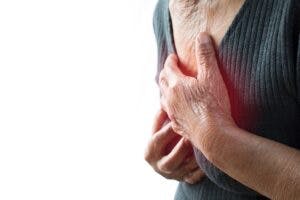What are the Signs and Symptoms of a Stroke?

Symptoms of a stroke are some of the most unique and intense symptoms that a human body can experience, as they are one-of-a-kind and almost exclusive to strokes.

Perhaps one of the most recognizable symptoms or signs of a stroke is droopiness or paralysis of the face. Although that is one of the most common symptoms, it is not the only one. Other symptoms of a stroke include:
- Difficulty walking or keeping balance, often accompanied with a sudden dizzy sensation
- Difficulty with vision in both or one eye, making vision blurred or dull. Vision may also be impaired by seeing double of one particular object in one or both eyes.
- Speaking may suddenly feel difficult and an individual’s voice may start to be slurred.
- Numbness or weakness of the face, arms or legs on one side or both sides of the body.
- Intense and sudden headache that may cause an individual to lose consciousness or vomit.
It is important to know that there are both silent symptoms and very upfront symptoms of this medical condition. Any indication of warning signs of a stroke should be taken very seriously and should be brought to the attention of a medical professional immediately. Perhaps one of the best ways to remember when to seek medical attention is to abide by the ‘FAST’ acronym:
- Face: Is the individual experiencing any facial droopiness? Is one side droopier than the other when they smile?
- Arms: If the individual is asked to raise their arms above their head, are they able to do so? Does one arm drop down or not move?
- Speech: If this person tries to speak, is their speech slurred? Are they unable to communicate?
- Time: If the answer to any of these questions is yes, it is time to take them to a medical professional or call 911 immediately.
The early signs of a stroke may also be a mini-stroke, also known as transient ischemic attack (TIA), and will demonstrate the same symptoms of a stroke, but may be a bit less severe and may not have the long-term damaging effects that a regular stroke has on a body. As a general rule of thumb, if you or your loved one believes that they are experiencing a stroke, it is best to seek out medical attention immediately rather than waiting.
Are There Different Types of Strokes and Do They Have Different Symptoms? What Causes Each?
There are different types of stroke that individuals can experience, however the signs and symptoms of all strokes are the same. It is important to know that different types of strokes are caused by completely different things, as well as may heavily depend on the individual’s medical history and environment. Below is a complete list of the different types of strokes and what causes them.

- Transient Ischemic Attack (TIA), also known as a mini-stroke, is a sensation that is identical to experiencing a stroke, with either less severe symptoms or symptoms that may not last as long. Having a mini-stroke puts individuals at a much higher risk to experience a larger stroke, leaving them susceptible, especially if they do not change their lifestyle. Such causes of these mini-strokes can be blocked artery, partially blocked artery or a clot within the heart.
- Ischemic Stroke is perhaps one of the most common strokes, with roughly 80% of strokes categorized as this kind. This stroke is caused when the blood flow, also referred to as ischemia, is blocked to the brain. This then causes the individual to either suffer a thrombotic stroke, or embolic stroke, which is defined by the type of blood clot that the individual has.
- Hemorrhagic stroke occurs within the body when a blood vessel ruptures or leaks. This can be caused by blood thinners, high blood pressure or an aneurysm.
What are the Risk Factors of a Stroke
It is important to seek medical attention immediately following any signs or symptoms of a stroke, as he or she can confidently tell you what may have caused it and how to move forward and negate any possibilities of a recurring stroke. After being accessed by a medical professional, an individual may have to adjust their lifestyle in order to cure the underlying root cause of the stroke, cutting out the common risk factors of a stroke. Risk factors can be lifestyle or medical or simply factors that can work against a body when fighting against a stroke. Such risk factors include:
- Excessive alcohol consumption
- Excessive use of drugs, especially methamphetamines and cocaine.
- Being overweight
- Not partaking in regular physical activity, as advised by your doctor.
- High blood pressure
- High cholesterol
- Tobacco use
- Heart disease
- Family history of strokes
- Sleep apnea
- Being over the age of 55 puts people at risk for a stroke
- African Americans are more likely to suffer a stroke.
- Men are at a higher risk of suffering a stroke than women, but if women do have strokes, they are more likely to be fatal.
- The use of birth control pills.
For elderly individuals, experiencing a stroke may cause them to suffer side effects long after their stroke, including paralysis of their face, arms or legs. After a stroke, it is important to make sure that the lifestyle they are living is one that is healthy and encourages a stress-free mindset. They may need to improve their diets, cut out fatty foods, exercise more regularly and simply focus on living a healthy and happy life. After an elderly individual experience, a stroke, he or she may be advised to seek out home care services. It is important to know how a caregiver can enrich an elderly individuals’ life, especially after they have experienced a stroke.
Perhaps one of the most important aspects of understanding the signs and symptoms of a stroke is knowing that they are serious and indicate a very big underlying medical problem. We encourage you and urge you to seek medical attention or call 911 right away if you have experienced these symptoms.
